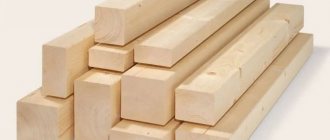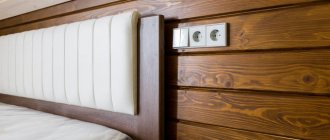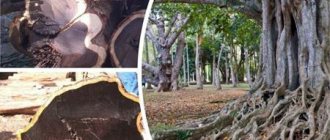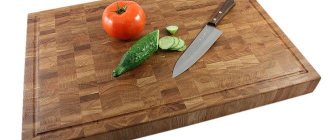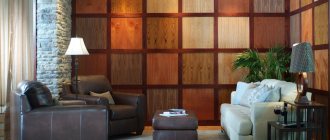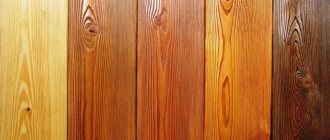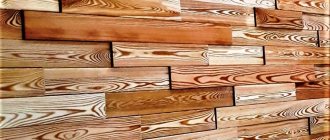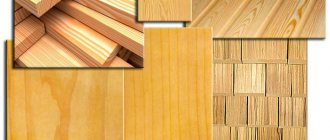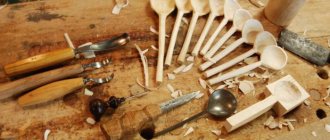Wood has always been used in the construction industry, even in the construction of pyramids and medieval granite castles. Today, wood materials are used no less widely, although with the invention of concrete, wood begins to yield to it its dominant position in the past. But even modern stone buildings cannot do without wood. For example, not a single residential building today can do without a rafter system, which in 99% of cases is made of wood. It is also used for finishing work, and this is not to mention formwork, if any parts of the house are being concreted. Yes, wooden house construction in our country is on the decline, and frame technologies have not taken root at all, and these are precisely those types of construction that require the use of large amounts of wood.
But even in stone house construction, wood is used quite a bit, so the woodworking industry today is developing at a fairly rapid pace. Many sawmills and factories produce a wide variety of lumber, the purpose of which is very wide. For each type of work, one or another type of material is used, in connection with this there is a classification of lumber. In addition to lumber, other wood materials are also used, such as plywood or particle boards, so we’ll talk about all of this.
Log
The most traditional lumber is a log, but today ordinary logs are used little, mostly builders give their preference to rounded logs. Such a log is lumber with an ideal round cross-sectional shape and is processed in factories. All logs used to build a house have the same diameter, so there is no need to adjust them to each other; houses are built from such logs very quickly. However, a rounded log is noticeably more expensive than a regular log, and a significant part of this difference is due to the preparation of the log for construction not only by carpentry, but by drying using not very cheap technologies.
Board
The most common type of lumber is board. A standard board is obtained by sawing a log, its length is within 2 meters, its thickness is up to 10 cm, and its width is up to 30 cm. The boards are used to lay floors in rooms, cover walls with them, and make ceilings between floors. Boards vary by category, the most popular of which is unedged board, and the most elite is solid board, one of the options of which is lining. The difference is that solid boards are made from expensive types of wood, while lining is made from almost any kind. They are united by the presence of tenons and grooves on the sides, thanks to which the laying of this material is done better than using nails or screws.
An unedged board is a board whose edges are not sawn, it is the cheapest, the only cheaper one is the slab, which is the outermost layer of cut logs with unprocessed edges. And if you can even make lining from an unedged board, then the slab is only suitable for sheathing or formwork, which, however, does not detract from its value when carrying out a variety of types of work, since formwork and sheathing are mandatory elements used in the construction of any house.
The industry also produces a wide variety of planed boards, which, however, are more often used not in construction, but in the furniture industry.
Boards are made from almost all industrial tree species, both deciduous and coniferous.
Types of wood for building a house
Wood is one of the best materials for building a private house, as it has unique natural qualities. Each of its breeds has individual characteristics. Having understood them, it will be easier to decide which wood is best suited for a particular case.
For private construction, both coniferous and deciduous wood are used. The most popular and affordable conifers are pine and spruce, the more expensive are fir, larch and cedar. Hardwood timber used for building houses is aspen, birch, poplar, oak, alder, linden and maple.
Let's take a closer look at the main characteristics of the most popular breeds.
Softwood
Pine
If we consider all types of wood in general, then, perhaps, pine will be the most used material for building houses. Everything is explained by the prevalence of this wood and its affordability.
Although pine is not without quite significant drawbacks, it remains in the leading positions of popularity among all types of wood used in construction
At the same time, pine lumber that has been properly dried has quite decent performance characteristics. The advantages include the following:
- low shrinkage - this means that a house made of this wood will not shrink much;
- softness - this quality greatly simplifies wood processing;
— moderate density contributes to low thermal conductivity;
— quite good resistance to putrefactive processes;
— evenness of the trunk and a small number of large knots;
— wear resistance;
- low tendency to develop large cracks.
The disadvantages of pine include the following factors:
- the appearance of blue staining, which can lead to destruction of the structure of the material, so it must be combated by treating the wood with special compounds;
— if we compare pine with other types of wood, we can note its lower resistance to rotting and cracking, as well as lower strength characteristics than, say, larch, cedar and oak.
When choosing pine for building a house, it is important to obtain reliable information about the conditions and location of its growth. The best quality is the material obtained from trees grown in the northern regions.
Spruce
Spruce, like pine, is a popular wood for private construction. And this is due to its characteristic positive features:
- low thermal conductivity, achieved due to the friability of wood;
- positive effect on human health, especially on the cardiovascular system;
Spruce wood can maintain a healthy indoor microclimate
- durability of lumber made from this type of wood;
— the presence of natural antibacterial substances in the wood, thanks to which the spruce is not susceptible to blue stain damage;
- spruce wood, like pine, is a low-drying, soft species.
The disadvantages of spruce lumber include the following characteristics:
- low moisture resistance;
- far from the best indicator of strength and wear resistance;
- tendency to the appearance of putrefactive processes;
— a large number of small and large knots, which makes cleaning and aligning the trunk difficult.
If you decide to build a house from spruce lumber, then you need to know that this wood requires initial, and then, during operation, quite frequent periodic treatment with special paints, varnishes and impregnations.
Larch
Larch is excellent for building a house, as it has almost impeccable natural qualities:
Larch is absolutely not afraid of exposure to moisture, does not rot and is characterized by excellent strength.
— high density and strength of wood;
- not susceptible to rotting, blue staining and the negative effects of various microorganisms and insects;
— high fire resistance;
- durability - houses made of larch can last for several centuries;
- moisture resistance and resistance to various atmospheric phenomena - precipitation, temperature changes, infrared exposure;
- beneficial effects on human health - increasing immunity, slowing down the aging of the body.
The disadvantages of larch include the following:
- hardness of the structure, which complicates its processing, but thanks to this characteristic, the wood has pronounced strength;
— strong drying of wood;
- high cost of building materials, exceeding the price of spruce and pine by two and sometimes more times.
Cedar
Cedar is not very often used to build houses, as it has a very high cost. However, its considerable price is due to its clearly high performance characteristics, which make the structure reliable and durable:
A house made of cedar is a very expensive pleasure, but it is a guarantee of quality and durability.
The obvious advantages of cedar wood include the following:
— wood is a low-drying material;
— complete resistance to putrefactive processes, to damage by insects and various microorganisms;
— high strength;
— moisture resistance;
— resistance to temperature changes, atmospheric and chemical influences;
— almost complete absence of risk of cracks;
— resistance to deformation;
— accessibility for processing;
— the presence of essential oils in wood, which helps create a healthy microclimate in the house, as they are a natural antiseptic and air flavoring agent.
Apart from the already mentioned high price, you probably can’t remember any other disadvantages.
Hardwood
Aspen
Aspen is rarely used for building houses. This is due to the fact that the material does not have the necessary qualities for building housing. Most often, aspen is used in the construction of baths or for finishing premises.
Aspen is good for a bathhouse or for decoration, but building a residential building from it is far from the best option
The advantages include :
- average wood drying ability;
— resistance to deformation, abrasion and moisture;
- ease of processing.
However, this breed also has its significant disadvantages :
— aspen is susceptible to natural diseases, so only trees of a certain age are used for construction;
— the service life of aspen lumber is significantly less than that of other types of wood;
— there are certain requirements for the harvesting and processing of wood that guarantee the preservation of its positive characteristics, but compliance with which is difficult to verify when purchasing.
Birch
Birch, like aspen, is not very suitable for building a house, as it is not durable. In addition, there are other pronounced disadvantages :
- wood is a highly drying, hard species - this quality makes its processing quite difficult;
— birch absorbs moisture well, which is why it is susceptible to very rapid biological decomposition if a set of protective measures is not taken.
Birch is also difficult to classify as the optimal material for building a house.
However, this wood also has its own advantages - it is strength and resistance to impact loads, a beautiful textured pattern and a delicate light color.
If, for some reason, it was nevertheless decided to build a house from birch logs, then experts advise laying out the first two lower rows of walls from a material more resistant to moisture, for example, oak or larch.
Alder
Alder is quite actively used for the construction of house walls, since, unlike some types of wood, it has the following positive characteristics :
— the low density of the structure significantly reduces its thermal conductivity;
— low weight allows you to equip any foundation for walls;
— high moisture resistance, commensurate with this parameter of oak and larch;
— homogeneity of the structural structure;
— alder does not warp or crack;
— wood has a large number of pleasant color shades.
Alder gives off a characteristic shade when cut. And the material itself for building a house is very good
The disadvantages of this material include the following:
- fragility of wood - so, when hammering nails into it, it can split;
— with constant contact with the ground, alder can be affected by putrefactive processes, although, when making water containers from it, it can be used without problems for a very long time;
- fragility and insufficient elasticity of wood;
— material intended for building a house requires special protective antiseptic treatment.
Oak
Oak has unique qualities, so it can be used for the construction of any enclosing and load-bearing structures.
Oak is suitable for any construction and finishing work. The only question is the profitability of this approach, since the cost of such wood is very high.
The advantages of oak wood include:
- average drying ability, due to which the lumber dries evenly;
— high moisture resistance;
— elasticity of fibers;
— resistance to damage by insects and microorganisms;
— structure hardness;
— high strength and reliability;
- very beautiful textured pattern and noble shades of wood.
We can only note that oak wood is practically free of disadvantages, with the exception of its very high cost. But it is precisely this very “minus” that in most cases makes the use of this material for building a house unprofitable.
Main performance characteristics of wood used in construction:
| Wood type | Pine | Spruce | Larch | Birch | Aspen | Oak | Alder | Cedar |
| Density, kg/m³ | 500 | 450 | 660 | 630 | 480 | 700 | 510÷550 | 400÷550 |
| Thermal conductivity, W/m×K | 0.14 | 0.11 | 0.12 | 0.15 | 0,17÷0,19 | 0.2 | 0,15÷0,17 | 0.095 |
| Tensile strength of wood along the grain, MPa: | ||||||||
| - stretching | 110 | 120 | 125 | 125 | 120 | 130 | 98 | 85÷90 |
| - compression | 48 | 44 | 62 | 55 | 42 | 58 | 47÷55 | 30÷40 |
| - bend | 85 | 80 | 105 | 110 | 78 | 106 | 85÷97 | 54÷72 |
| - chipping | 7.5 | 6.8 | 11 | 9.2 | 6.2 | 10 | 6.8 | 9.8 |
Wood species such as poplar, linden and maple should not be considered as materials for building a house, as they are short-lived and unstable to moisture and other negative external influences. Although there are offers on the market of ready-made log houses made from wood of these very species.
Find out which is better to build a house for permanent residence, and also read the review of popular materials in a special article on our portal.
timber
The beam is also made from a solid log, and, in fact, it is a log, only its sides are not round, but cut. This lumber is mainly used for making rafters for houses of any type or for creating frames for frame houses. There are different types of timber, the most popular is ordinary timber, which can have any thickness greater than 10 cm. The more expensive one is profiled timber. In a regular beam, all sides are smooth; in a profiled beam, the two opposite sides have a profile somewhat similar to the tongue-and-groove system. Thanks to this profile, the installation of a log house from beams is of higher quality, but at the same time such timber is much more expensive.
Today, glued laminated timber has become quite widespread. Strictly speaking, this is not even a beam as such, but a wooden mass similar to a beam, made from boards glued together. However, such timber is much stronger and more durable than conventional types of timber, and it does not shrink or warp under high humidity.
You can also mention such a type of timber as a block. It is made mainly by cutting thick boards and is most often used in finishing and repair work. Its usual thickness does not exceed 10 cm, the length may vary depending on the application.
Other lumber
In addition to boards and timber, a number of lumber is produced, which are mainly varieties of these two types.
Criteria for choosing lumber
When choosing lumber, be sure to look at grade, appearance and residual moisture. If you do not have a special device for measuring wood moisture, its level can be estimated by the sound that the boards make when tapped. Dry ones sound clear, but wet ones sound dull.
Grading (quality) criteria are determined by GOST. There are five grades of board, but only four of timber. For capital construction, in general, only selected and first grade are suitable. The rest are undesirable due to the presence of certain defects.
Wood defects
Wood defects
- Rot – darker and reddish areas are present on rotten material; rotten wood is loose and brittle.
- Fungus - a gray-black or bluish tint is visible on the surface. The fungus itself does not affect the strength of the tree, but contributes to its rotting. Treated with antiseptic treatment.
- Sapwood is the young, actively growing layer of the trunk surrounding the core, often varying in color. The defect is considered to be internal sapwood.
- Hardness is the partial presence of wood from the base of the trunk in the material, which has a different structure and greater hardness.
- Wane is a section of bark on the edges of lumber. As a result, the geometry of the product is not ideal. In the future, the tree may become infected with wood-boring insects and fungus.
- Sprouting is living or dead bark inside a tree, formed due to its mechanical damage.
- A crack is the result of fibers breaking. Some are formed due to climatic influences on a living tree, others - during the drying process of lumber.
- Wormholes are damage to wood as a result of the activity of the bark beetle. Reduces the strength of the material.
Higher grades of wood
The most expensive selected grade allows for minimal presence of knots and end cracks, and the error in linear dimensions (non-parallelism of layers) is set within 1%. That is, the geometry of the highest grade is almost ideal. Any wood diseases are excluded.
The first grade may have almost the same perfect geometry, but allows the presence of healthy knots and cracks in a slightly higher percentage. There may be specific wood stains, such as sapwood or fungal stains. Mold on the surface is also possible, which is typical for the summer sales period, but the area occupied by defects is no more than 10%. Rot is not allowed. Slight wane possible.
Budget varieties
The main advantage of second-grade lumber is its low price. But even the second grade suffers from a significant roll of faces and edges, and the presence of resin pockets. Significant wane, fungal damage, and the presence of small bluish spots are allowed. Such defects are not a problem when it comes to temporary structures or hidden elements such as sheathing. You can also use second grade edged boards in the manufacture of formwork or scaffolding.
Third grade wood
The third grade allows the same defects as the second, but in larger quantities. There may also be defects such as sprouts, rotten knots, and wormholes. Face and through cracks are allowed, including those extending to the end. Due to these signs, the physical properties of wood sharply deteriorate. Such material is suitable only for the construction of temporary shelters, the manufacture of containers and formwork.
Wood of the lowest quality, fourth grade, has no restrictions on humidity, the number of wanes, and allows wormholes, rot, and warping along the face and edge.
Block house
In fact, the block house is more likely not a construction material, but a finishing material, and is one of the siding options. Despite the imported origin of the name (“house made of blocks”), this material has nothing to do with block houses. It is not known why this version of lumber was called that, but many developers and homeowners really like it, and they prefer to sheathe their houses with it. It is a block house, a log cut in two, or a board with one rounded side. The method of fastening these boards together is similar to fastening the lining - tongue and groove. The walls of the house are lined with a block house, and from the outside it seems that the frame of the house is made of solid logs. This material can also be used for internal cladding, but in this case the boards are taken of less thickness.
Spruce
It cannot be classified as a hard rock, but as a universal one, so to speak. Houses made of spruce retain heat well, but are less durable due to wood rotting.
It can be used to build a bathhouse, which cannot be said about larch or cedar - they are too resinous and begin to flow mercilessly as the temperature rises.
Sanded spruce scrap does not change the color of the wood - it remains white for a long time, then darkens from humidity. But a lot of time will pass before this moment.
Unfortunately, spruce has increased knotiness, so it cannot be used to make rafter systems and ceilings. Hardwoods will handle this much better.
Plywood
Plywood in its modern form appeared on the construction market more than two centuries ago, and since then its quality has increased significantly, mainly due to improvements in production technology. It is made from wood veneer, the layers of which are glued together, and the result is an excellent slab material, without which it is impossible to imagine a single construction site today. The variety of types of plywood is very large; today plywood is produced as ordinary, packaging, furniture, industrial, construction, waterproof, and even plywood from which very large structural elements can be erected. Veneer for plywood is usually made from coniferous trees - spruce, pine, larch. But the highest quality plywood is made from birch veneer, and although it is noticeably more expensive, it still enjoys a certain popularity.
Wood-based materials
Other wood-based panel materials are not far behind plywood in popularity. The most famous of them are chipboards and fibreboards (chipboard and fibreboard, respectively). The first ones are made from pressed shavings impregnated with different types of resins; different pressing technologies can be used, but the result is an excellent building material, the best examples of which are not inferior in quality to plywood. Fiberboard is a material similar to chipboard, but instead of shavings, the filler is sawdust and other crushed wood waste.
In addition to chipboard and fiberboard, there are other types of wood-based panels, such as blockboard, Canadian plywood (OSB), cement-bonded particle board, thermoplastic wood-based panels and many others. But they have not yet become as widespread as those listed above, although technologies are changing, and it may happen that completely new wood-based construction and finishing materials will appear, which can safely be called nano-wood construction materials!
This entire range of lumber is widely represented on the Baltic construction market on the Novorizhskoe highway, 10 km away. from MKAD
Source: baltiya-tk.ru
Application areas of different types of wood
According to their purpose, all wooden building materials are divided into finishing and general construction. The latter are intended for the construction of enclosing and overlapping structures, as well as for other loaded elements of the building. Finishing materials are used for decorative design of surfaces.
From the information presented above about wood species, it is clearly seen that they differ in their technical and operational characteristics. Therefore, when building a house, several wood species are almost always used, each of which is best suited for a specific area of construction.
- Pine is excellent for the construction of enclosing structures.
- Spruce lumber is often used to make floor beams, rafter system elements, flooring, and ceiling cladding.
The unique properties of larch even make it possible to strengthen the banks of reservoirs and install walkways and piers
- Larch is used for laying the lower crowns of the house, as it has high moisture resistance. In addition, larch trunks are used for pile foundations, even for structures built on water, for example, walkways or piers, as well as for strengthening the banks of reservoirs.
- Oak is most often used for making windows, doors and finishing openings. In addition, oak can be used for interior wall decoration, as well as for flooring.
- Maple, linden and alder are used for carpentry and carvings, as they have a soft structure. For example, this wood is used to make platbands or carved cornice trim.
- Birch or alder is used for interior decoration. The textured pattern and color shades of alder wood allow it to be used to imitate more valuable types of wood.
